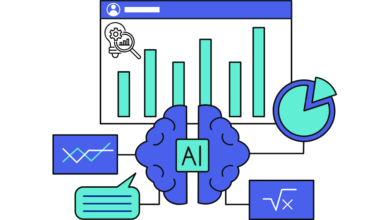Can AI actually contribute to AuM growth? According to Deloitte, financial institutions that use AI in the investment process grow AuM by 8% and raise productivity by 14%. Now that financial markets have changed, Wealth and Asset Managers are racing to develop AI solutions that can assist their clients by successfully navigating through new market conditions.
As we are witnessing a new financial chapter unfold, maybe it’s time to ask ourselves: on which side do we want to stay?
In a decade where low margins, high pressure, and increasing competition transformed the opportunity set for Asset and Wealth managers, new technologies – especially AI – are becoming key to withstand such complexity. Those who lead this technological transition increase revenues and AuM, and those who are left behind risk losing competitive advantage and market share. It all comes down to understanding the value add – the entrepreneurial effect – brought by integrating AI in the investment process, in terms of fewer errors and more efficient use of resources.
Financial markets: a moving bullseye?
At the beginning of the 60s, the Polish-born mathematician Benoît Mandelbrot started looking for new methods to interpret complexity through statistical methods and probability. His team was one of the few in the world able to access quality data and computers capable of contemporarily analysing millions of data per second. Eventually, the financial time series captured his attention. Mandelbrot perceived a hidden geometry behind how futures’ prices evolved throughout time, the same geometry we can observe in galaxies or coastlines.
However, these weren’t simple patterns or investable signals. Instead, they were indicators of an invisible mechanism countlessly repeated at every scale. Fractal theory emerged from that provocative idea to describe phenomena in which micro and macro structures are similar.
Fractals can be found in the shapes of clouds, tree branches, market risk, and – to a certain extent – in how innovation keeps reshaping financial services. The explosion of data (along with the change in business models and investment attitudes) has redesigned the modern financial system, currently undergoing a period of significant challenges that is hard to keep up with. Many managers are now turning towards adopting new technologies as a critical factor to maintain – or acquire – a competitive edge and satisfy increasingly demanding clients.
As highlighted by the report “The Future of Asset Management” held by Accenture, AI and Open Innovation are their top priorities. Similar evidence was highlighted in a recent study by Ambrosetti, which found that access to new technologies and specialised know-how are the main drivers of partnerships that are driving the banking system and the fintech ecosystem closer together.
Why do financial institutions collaborate with Fintechs?

Wealth Management 4.0: What does it look like?
BCG estimates that the world’s AuM has surpassed the 100 trillion dollar mark. It is precisely in the largest industry in the world that institutional investors’ hunger for innovation – especially in recent years – seems to have repercussions at all levels, just like fractals. Innovation has produced a new range of investment solutions resulting from a new sensitivity towards sustainability-related issues and an adaptive, customised and high-tech approach to portfolio management.
The big shift from vertical integration to adopting open architectures and partnerships with specialised players in the sector has fueled the transition from a product-centric to a client-centric model. Open innovation has thus become key to remaining competitive and shortening the time-to-market of new investment solutions, such as AI-driven discretionary mandates.
A study conducted by Deloitte shows that while for some categories – such as cloud and cyber security – investments will soon plateau, AI is expected to attract the largest amount of investments in the next two years, up by more than 50% compared to two years ago. On the one hand, this is a significant step that points out the maturity and adoption of this technology and, on the other, confirms its normalisation alongside wealth and asset managers.
Net change in investment intentions of financial institutions over the next two years

The high cost of not using AI
The same study also presents the first evidence of performance of the institutions that invested more in adopting AI in their investment process. It shows that financial institutions leading the digital transformation recorded massive productivity gains that eventually translated into a higher quality of their human capital.
As the study highlights, those who have adopted new technologies to support their investment process have recorded an average increase in productivity of 14%, with an AuM growth of over 8% and revenues of 7%. These effects appear to be consistent whether we talk about traditional institutional investors, family offices, private banks or wealth managers. In short, introducing AI in the investment process delivers value both to end customers and corporate profitability.
The effects of technology on business processes must be understood at both the micro and macro levels. In this sense, a positive AI effect can exist when the entrepreneurial effect of technology – the automation of low value-added activities – overcomes the traditional replacement effect: this allows more human resources to climb the value ladder and participate in tasks of greater value with significant repercussions on revenues and productivity.
An example of innovation was the response of Asset and Wealth managers to the growing demand for adaptive and efficient investment solutions. Thanks to collaborations with independent advisors, the first investment funds, certificates, and AI-driven discretionary mandates were born. In this scenario, the investment manager controls the definition of the investable universe, the constraints, and the investment strategy’s execution, benefiting from AI’s inputs for the portfolio’s construction. With adaptive risk management and tactical rebalancing, AI has made it possible to align positioning with the evolution of financial markets, allowing us to keep calm even during moments of high volatility, such as those recently experienced.
The ‘tech factor’ benefit institutional investors, banks, advisors, and family offices

So, what’s next for financial institutions?
Technological innovation has brought various benefits along the entire value chain, which today translate into greater efficiency and attractiveness of investment solutions regarding costs, operational efficiency, and the ability to meet the growing demand for custom solutions. AI is an opportunity for Asset and Wealth managers to renew products and processes and, in the meantime, acquire new market shares.
It shouldn’t come as a surprise to see more and more managers seeking to integrate AI into the investment process. The pages of a new chapter are unfolding, and those who turn to this new chapter see their revenues, customers, and masses grow. And even if we don’t know precisely where the future will take us, the steps that financial institutions are taking already portend what the future of wealth management will be like: adaptive, technological, and tailor-made.




